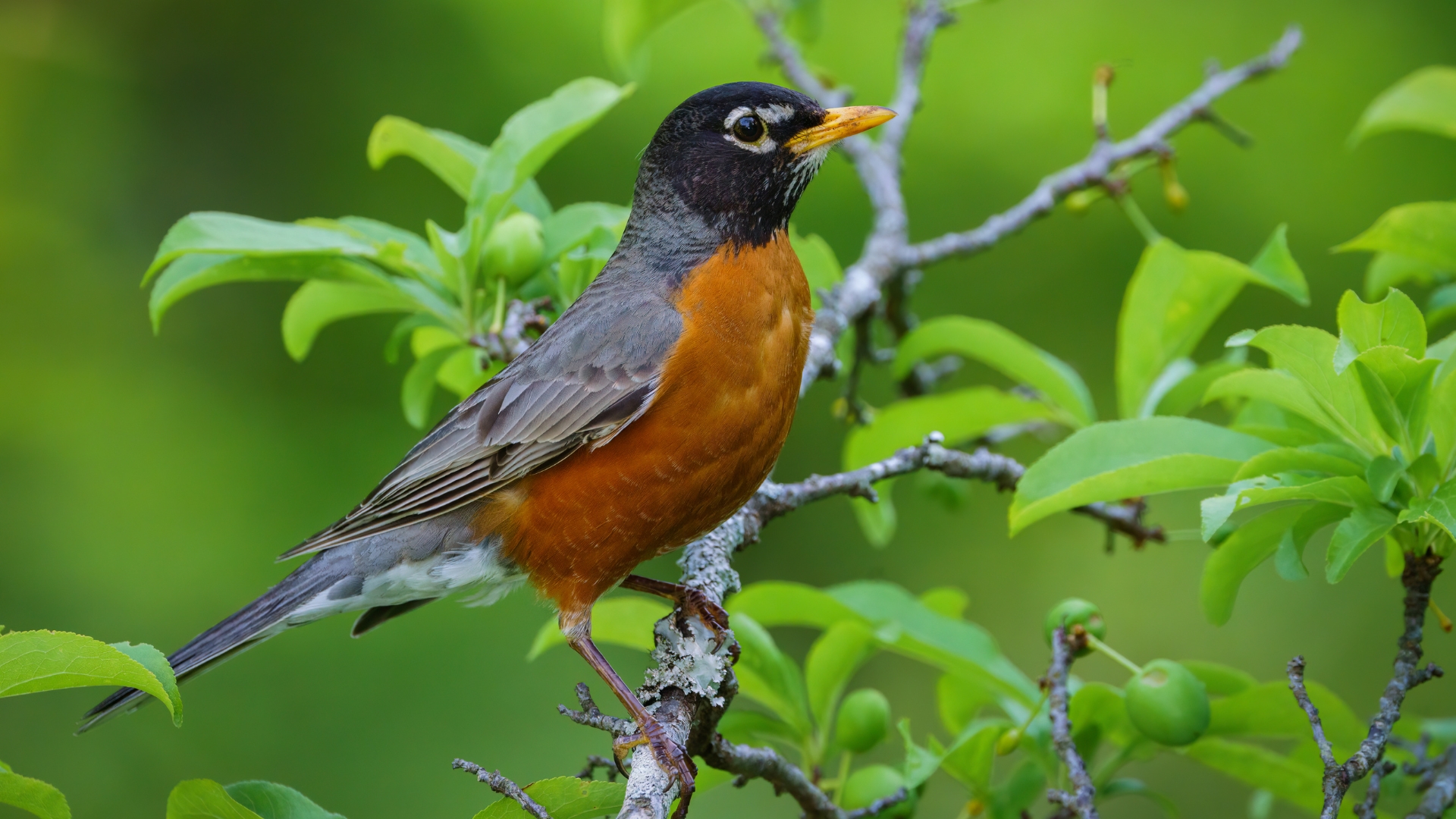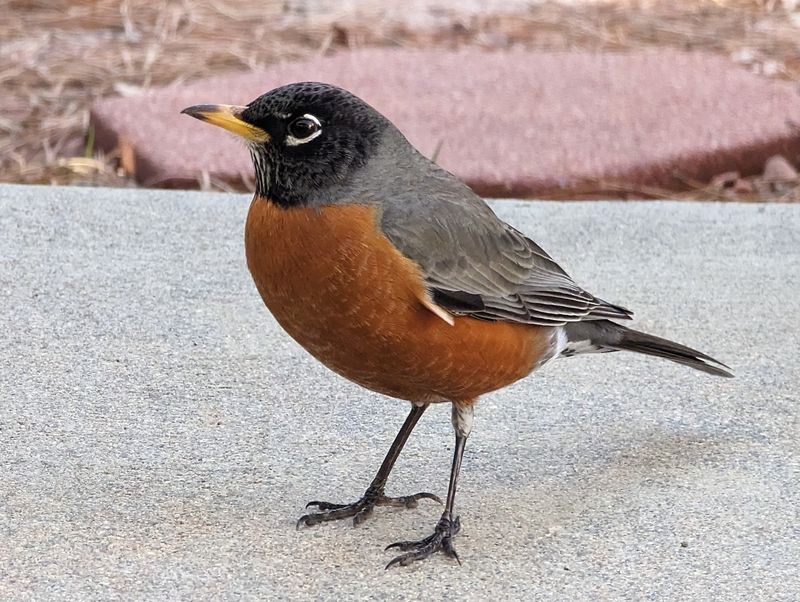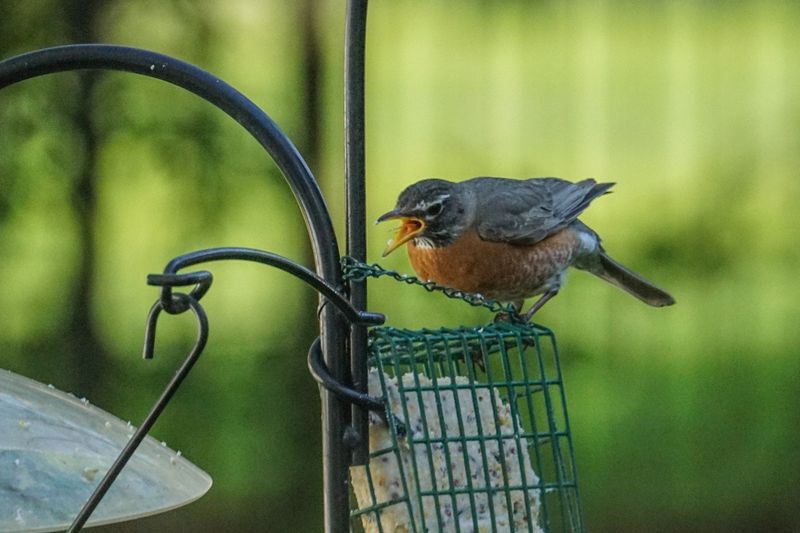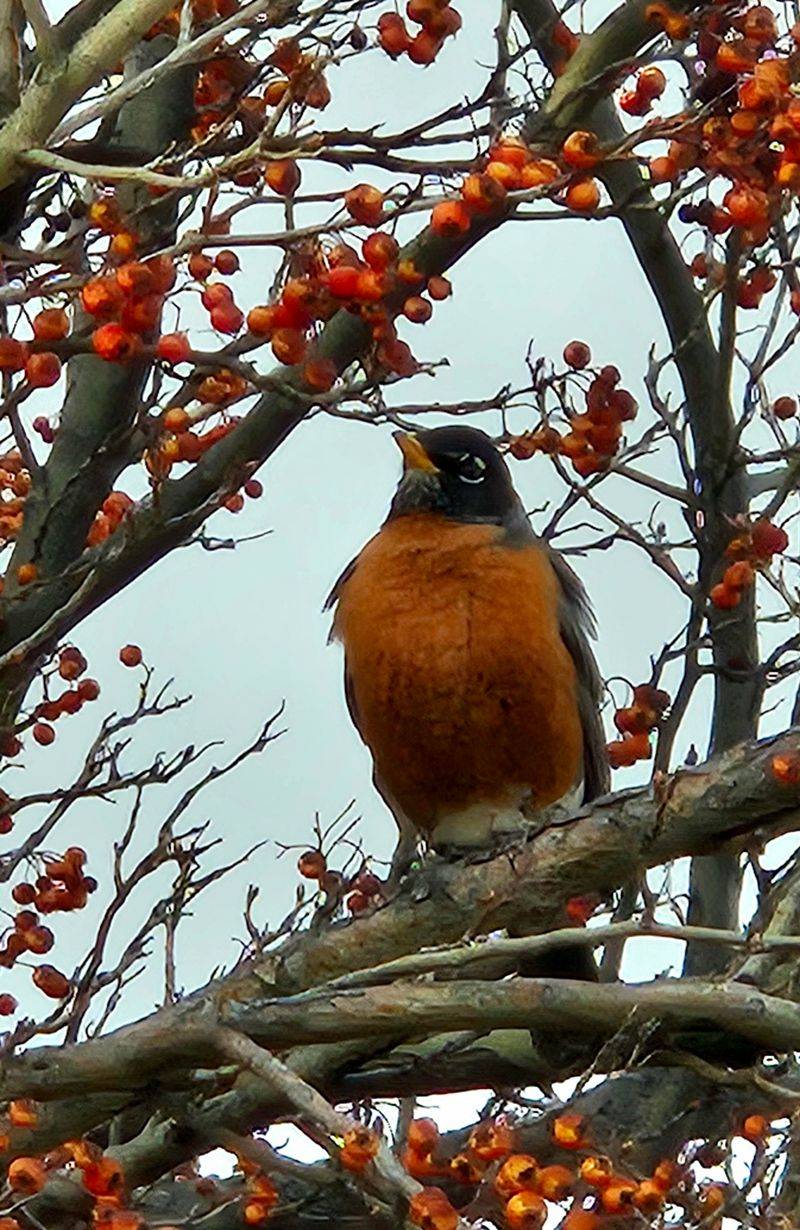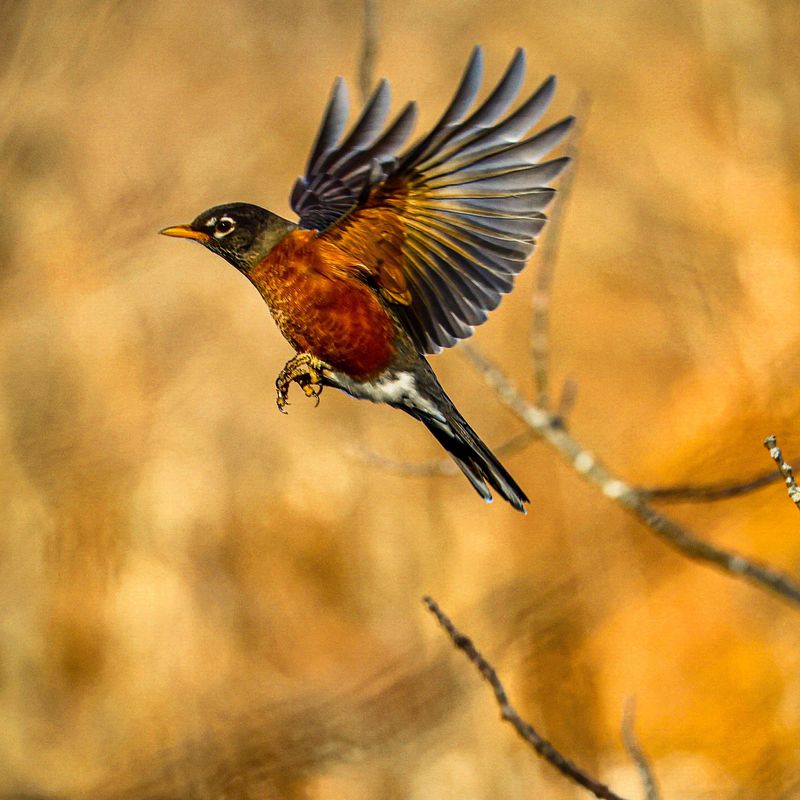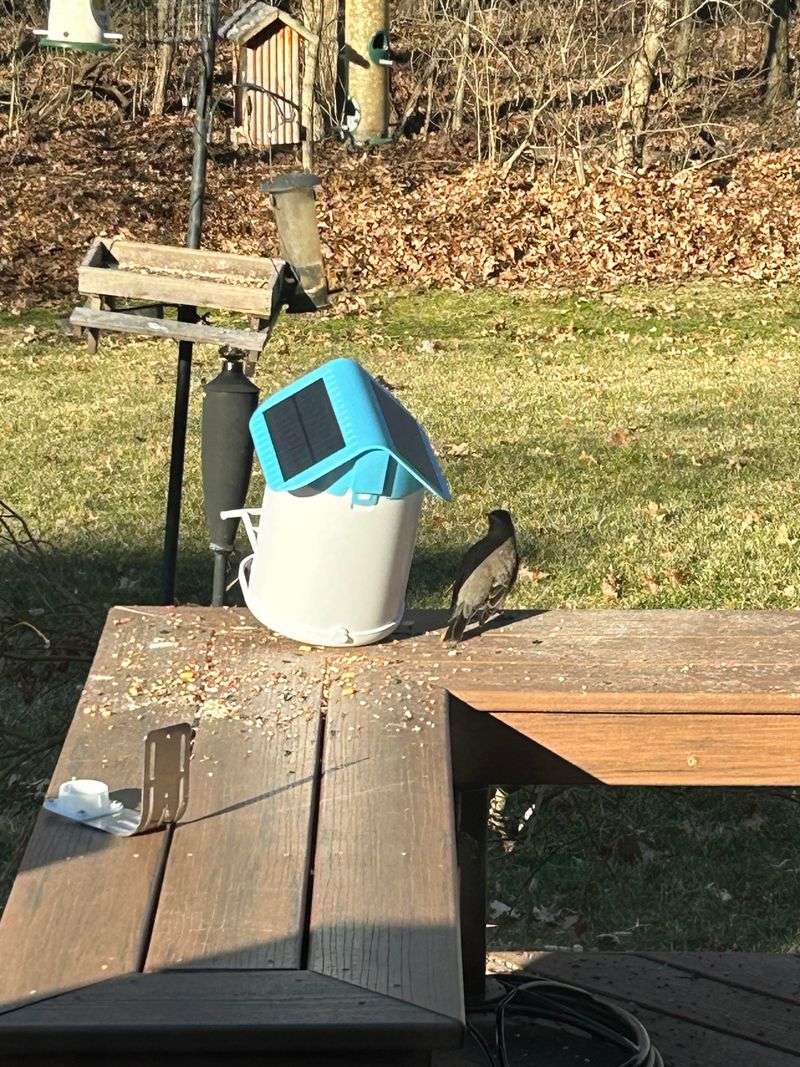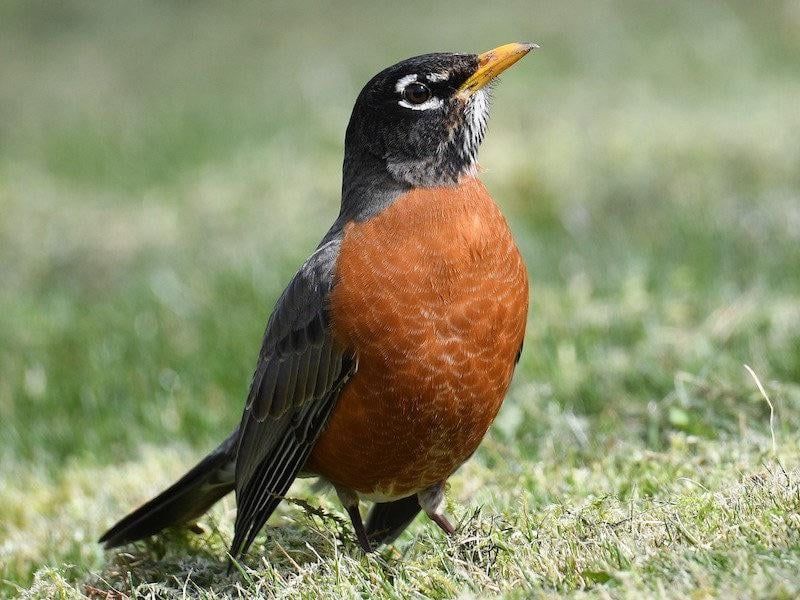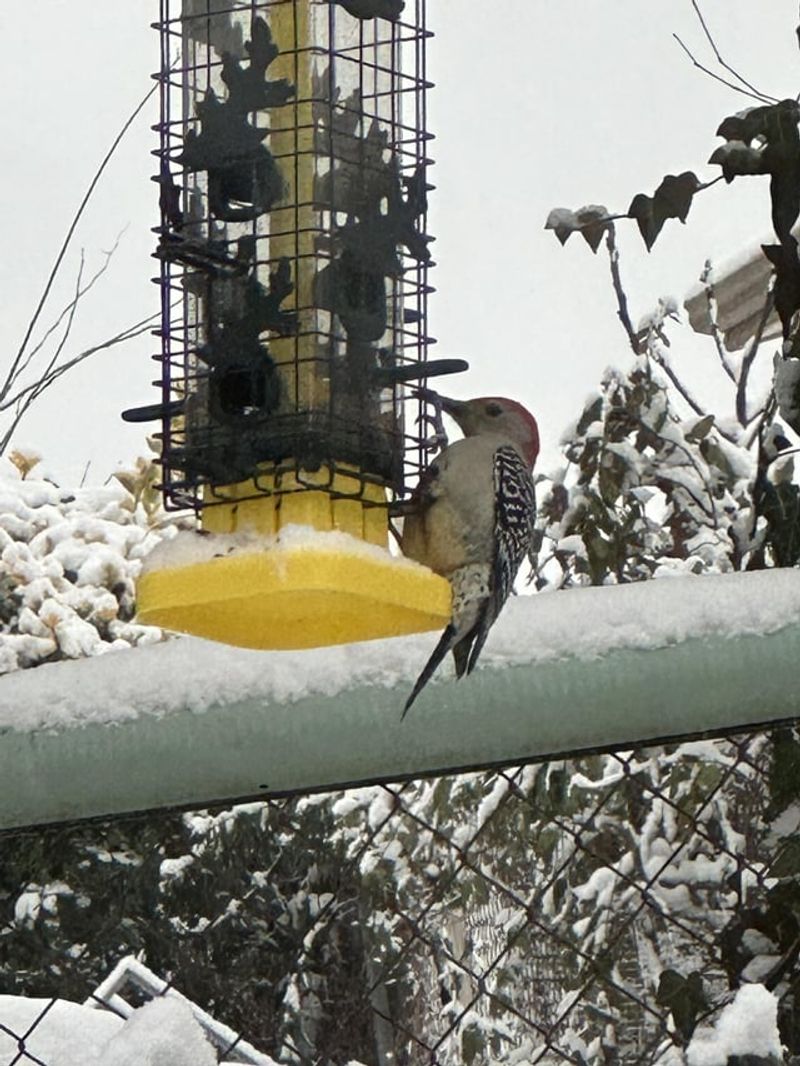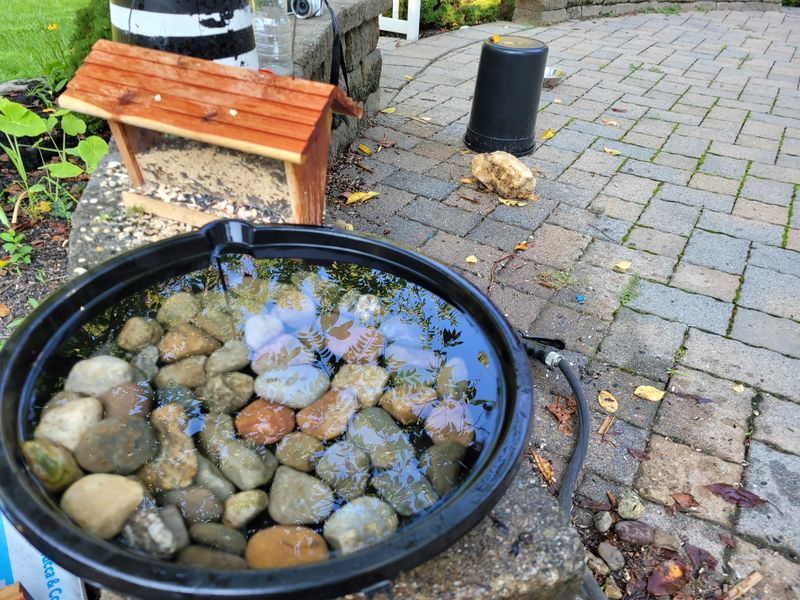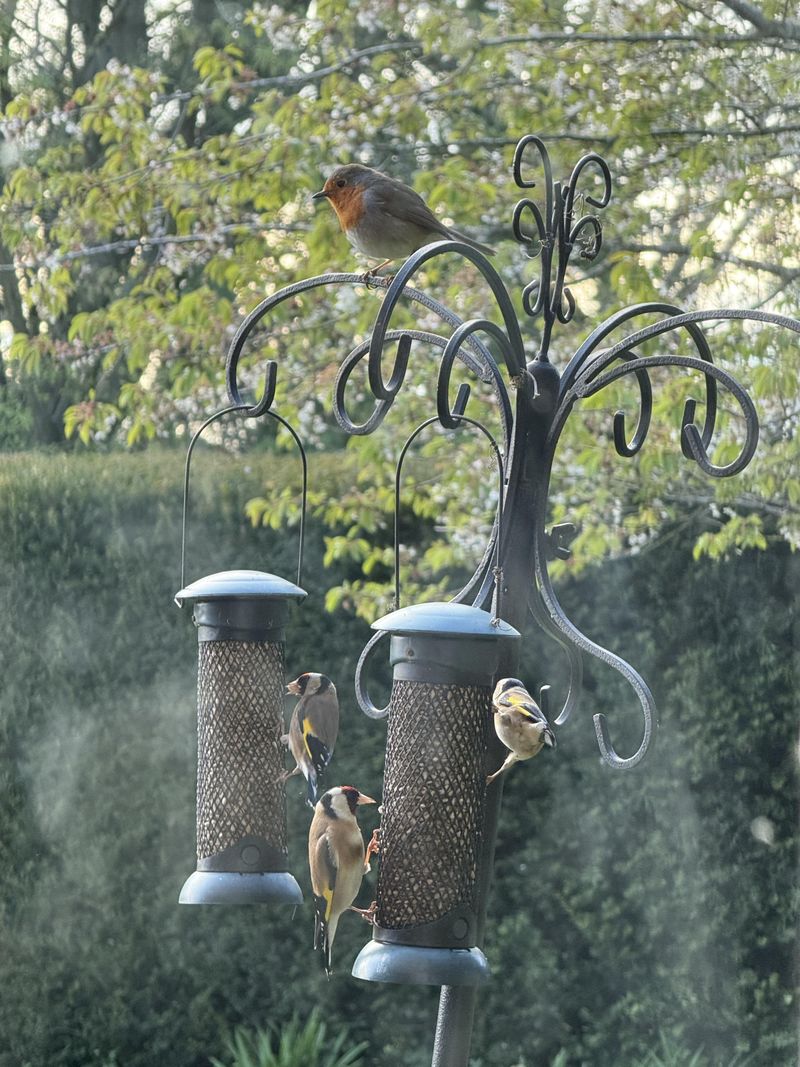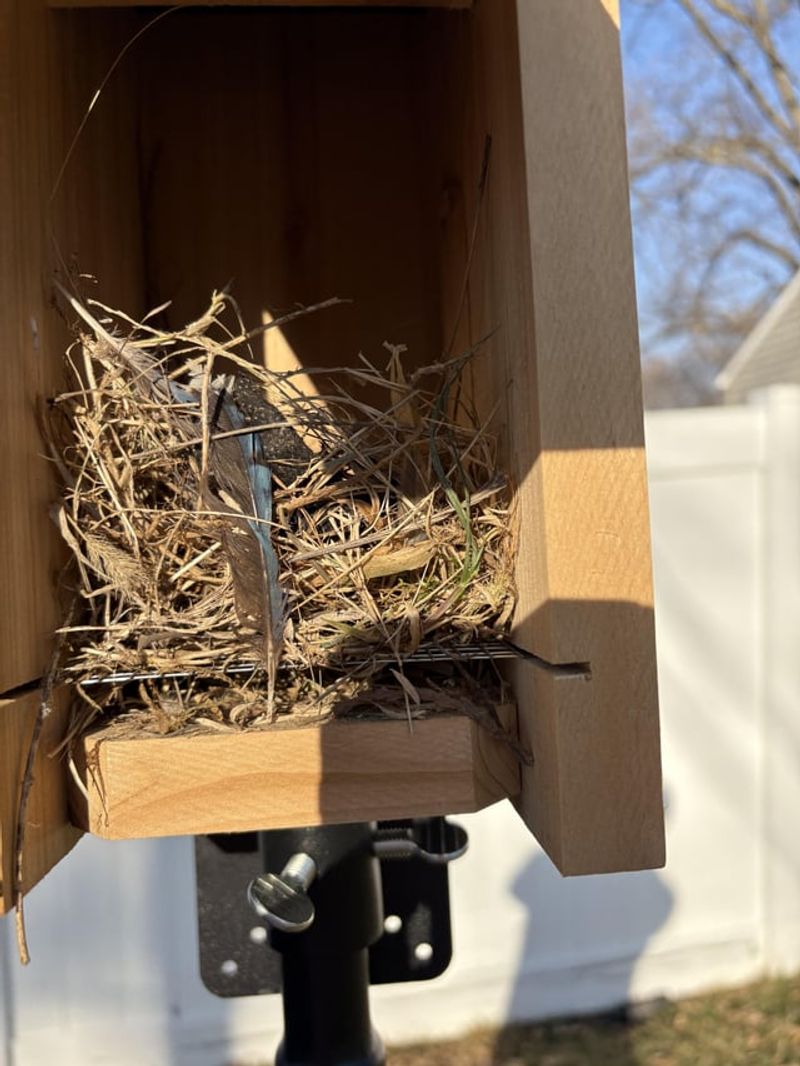I used to wonder why robins never touched my bird feeder, even though the rest of the backyard felt like a bird buffet. Turns out, robins just aren’t into typical feeder food—and that’s totally normal for them.
But that doesn’t mean you can’t keep them coming back. Once I made a few changes, they started showing up like clockwork.
Here are 6 reasons they skip the feeder, plus 9 easy ways to make your yard their favorite hangout.
1. Robins Prefer Insects Over Seeds
Unlike cardinals or finches, robins primarily hunt for protein-rich insects and worms. Their natural diet consists of beetles, caterpillars, and especially earthworms, which they locate by tilting their heads to spot movement in the soil.
Traditional seed-filled feeders simply don’t offer the meaty meals these birds crave. Even premium birdseed blends lack the protein content and texture robins seek when foraging, making your carefully selected seed mix completely uninteresting to these orange-breasted visitors.
2. Standard Feeder Designs Don’t Accommodate Robins
Most bird feeders are designed for perching birds that can comfortably grip small ledges while eating seeds. Robins, however, are ground feeders by nature and prefer to hop along open surfaces rather than perch on narrow platforms.
Their larger size and different hunting style make typical tube or hopper feeders awkward and uncomfortable. Watch a robin in your yard—you’ll notice they spend most of their feeding time on the ground or large flat surfaces, rarely attempting to use hanging feeders.
3. Robins Are Fruit Eaters, Not Seed Crackers
A robin’s beak isn’t built for cracking hard seeds. Unlike finches with their strong, cone-shaped beaks, robins have slender bills designed for probing soil and plucking berries. Their mouth structure works perfectly for their natural diet.
When autumn arrives, robins switch from primarily eating insects to consuming berries and small fruits. Their digestive systems are specially adapted to process soft, juicy foods rather than dry seeds, explaining why even hungry robins will ignore your expensive birdseed blend.
4. Robins Are Social Ground Feeders
Robins typically feed in open spaces where they can watch for predators while foraging. Traditional hanging feeders create vulnerability they instinctively avoid. Their feeding style involves hopping across lawns in small groups, staying alert to their surroundings.
This social ground-feeding behavior is deeply ingrained in robin biology. They prefer spaces where multiple birds can feed together with clear sightlines. The confined nature of most bird feeders creates an uncomfortable feeding environment that contradicts their natural instincts.
5. Seasonal Diet Changes Affect Feeder Visits
Robin feeding habits change dramatically with the seasons. During spring and summer, they hunt almost exclusively for protein-rich invertebrates to feed growing nestlings. Your seed feeder offers nothing valuable during these crucial breeding months.
Winter brings different challenges, pushing robins to seek out fruit sources when insects are scarce. They often travel in flocks during colder months, following reliable food sources rather than staying near feeders. Their migratory patterns and seasonal diet shifts make consistent feeder visits unlikely.
6. Territorial Behavior Limits Feeder Use
Male robins establish and vigorously defend breeding territories, making shared feeding stations problematic. During nesting season, a male robin might actually avoid areas where other birds congregate, viewing feeders as potential competition zones.
Their territorial nature peaks during spring when males sing from prominent perches to announce boundaries. This natural behavior pattern means robins prefer scattered food sources they can claim individually rather than communal feeders where territory disputes might occur.
7. Offer A Platform Feeder With Mealworms
Dried or live mealworms on an open platform feeder create an irresistible invitation for robins. The platform design mimics their natural ground-feeding style while offering protein-rich food they crave. Place it near shrubs where robins can retreat quickly if threatened.
Mealworms provide the protein robins naturally seek when hunting insects. Start with dried mealworms, which are convenient and less intimidating for beginners, then consider live ones during breeding season when robins need extra protein for their growing chicks.
8. Plant Berry-Producing Shrubs And Trees
Native berry plants like serviceberry, dogwood, and holly create a natural buffet robins can’t resist. These plants provide essential nutrition during winter months when insects are scarce and robins need fruit to survive.
Stagger your plantings to ensure berries ripen throughout different seasons. Some varieties like winterberry holly hold their fruit well into winter, providing critical food during the harshest months. Creating this diverse berry landscape guarantees robin visits far more effectively than any feeder.
9. Create A Bird Bath With Moving Water
Robins adore water, especially moving water that catches their attention. A bird bath with a small solar fountain or water dripper becomes an instant robin magnet, drawing them in for drinking and bathing year-round.
Position your bath in a somewhat open area where robins feel safe from predators, but near enough to trees or shrubs for quick escape routes. The sound of moving water acts as a natural bird attractor, bringing robins to your yard even when they’re not actively seeking food.
10. Maintain A Chemical-Free Lawn
Pesticide-free lawns support healthy earthworm populations that robins depend on. Chemicals designed to kill insects also eliminate the very food robins search for when they hop across your grass, effectively creating a food desert for these birds.
Switch to organic lawn care practices and you’ll notice more robins appearing, heads tilted as they listen for worm movement below the surface. Their increased presence serves as a natural indicator that your yard is becoming a healthier ecosystem for all wildlife.
11. Create Brush Piles For Security
Robins appreciate nearby shelter when feeding in exposed areas. A simple brush pile created from fallen branches provides instant security, giving robins a quick retreat when hawks or other predators appear overhead.
Position these natural shelters near feeding areas but not so close that they provide hiding spots for cats or other ground predators. The ideal brush pile is somewhat open at ground level while providing dense coverage above, creating the perfect balance of accessibility and protection.
12. Offer Fruit On A Ground Feeding Tray
Chopped apples, berries, and grapes placed on a ground tray mimic robins’ natural foraging style. During winter months when natural fruit becomes scarce, this simple offering can sustain resident robins and attract migrating flocks passing through your area.
Refresh fruit offerings daily to prevent mold and fermentation. A shallow tray with low sides works best, allowing robins to spot potential threats while feeding. This ground-level approach honors their natural feeding preferences while providing nutritional support.
13. Cultivate Robin-Friendly Garden Beds
Loose, rich soil in garden beds creates prime hunting grounds for robins searching for insects. Turn your soil occasionally to expose invertebrates, and robins will quickly learn your garden is a reliable food source.
Avoid using landscape fabric or heavy mulch that blocks access to soil. Instead, use light organic mulches that break down and support insect life. Robins will reward your gardening approach by helping control pest populations while adding their cheerful presence to your outdoor space.
14. Provide Nesting Materials And Sites
Robins build distinctive mud-cup nests reinforced with grass and twigs. Offering small piles of natural nesting materials like grass clippings, twigs, and even pet fur encourages robins to nest nearby, increasing their presence in your yard.
Install nesting shelves under eaves or on tree trunks at heights of 5-10 feet. Unlike cavity-nesting birds, robins prefer open platforms with overhead protection. Once they establish nesting sites, they’ll return year after year, becoming permanent residents in your bird-friendly landscape.
15. Keep Cats Indoors
Ground-feeding robins are particularly vulnerable to cat predation. Even well-fed house cats instinctively hunt birds, making them one of the leading causes of robin mortality in residential areas.
Creating a truly robin-friendly yard means keeping cats indoors or in secure outdoor enclosures. This simple step dramatically increases robin survival rates and encourages more frequent visits. Robins quickly recognize safe territories and will establish regular feeding patterns in yards where predator threats are minimized.

